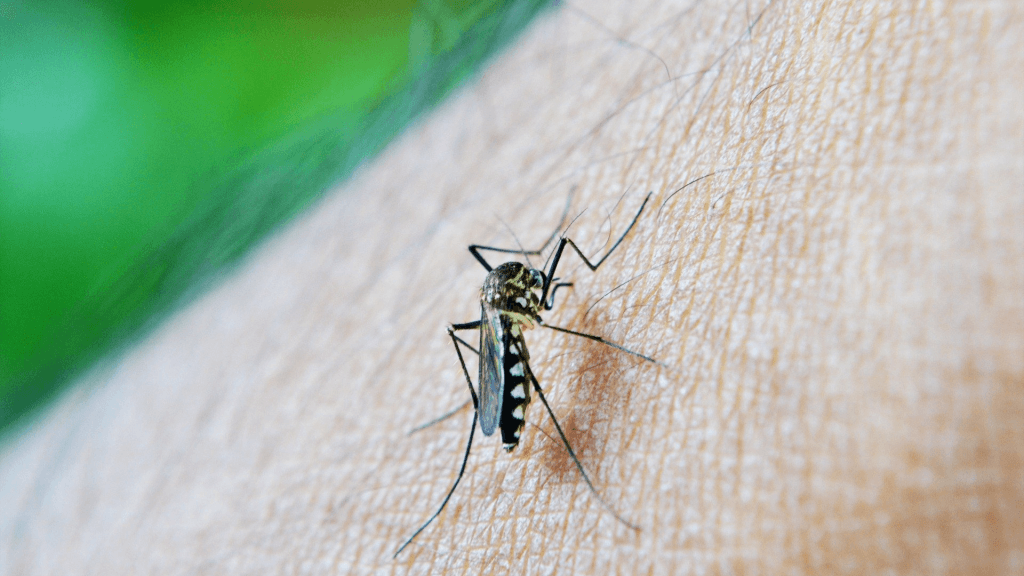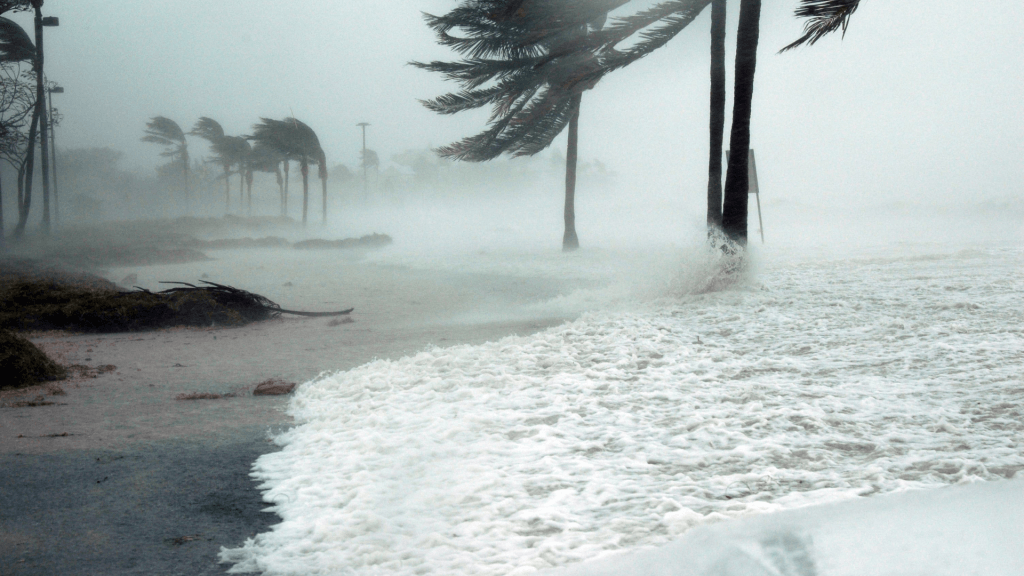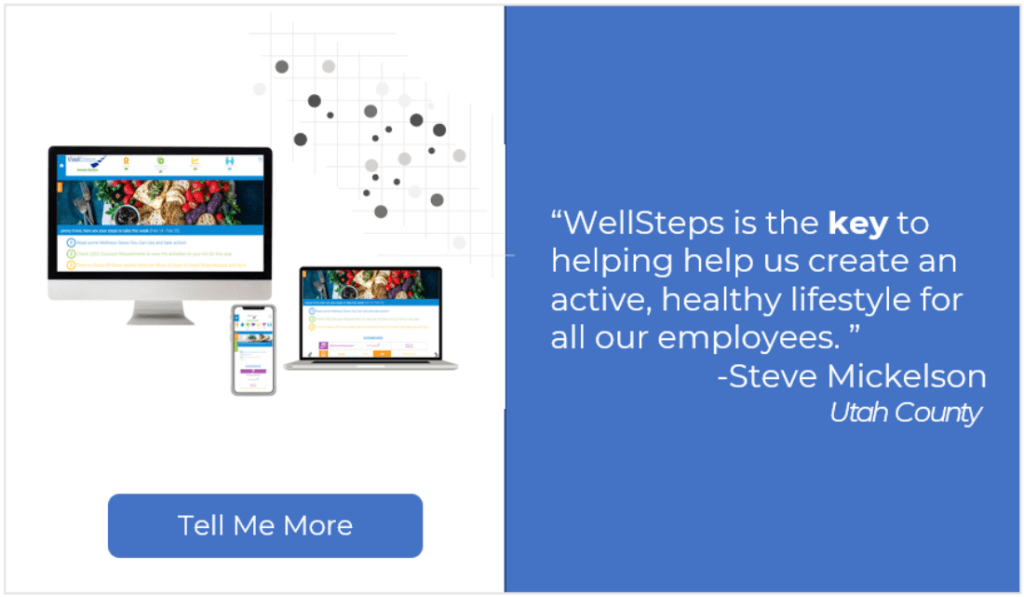Understanding the specific health and wellness needs of employees in coastal states is crucial to crafting location specific wellness programs. The unique coastal environments present opportunities and challenges that are different then central states, such as air pollution, weather-related risks, and more.
By incorporating tailored initiatives specific to the region, employers can address physical and mental health concerns while harnessing the influence of coastal settings. Understanding how to create a wellness program for your area ensures that your initiatives resonate with employees more specifically instead of broadly.

In this article we’ll explore specific health needs for coastal regions and why they’re important to incorporate when creating your wellness program.
Coastal Health Concerns For Both East and West United States
There are both similarities and differences when looking at both the east and west coasts of the United States. The same applies when comparing health trends between northern and southern states on the same coast. Here are some of the similarities of health concerns no matter where your employees live.
- Respiratory Health due to air pollution for wildfires or urban areas
- Vector-Borne Diseases from tick bites and tropical insects
- Allergies due to unique plant life in any area
While some health concerns remain consistent regardless of location, we will explore how respiratory health, vector-borne diseases, and allergies manifest in different coastal regions, shedding light on the specific conditions employees encounter based on their geographical settings. Plus, ideas on how you can include addressing these conditions into your location specific wellness programs.
RELATED: 19 Healthy Work Environment Examples to Upgrade Your Employees’ Physical Well-Being
Respiratory Health Concerns to Address When Creating Your Wellness Program
California has experienced issues with air pollution, particularly in regions like Los Angeles and the Central Valley. This has contributed to higher rates of respiratory conditions such as asthma and chronic obstructive pulmonary disease (COPD).

California is also prone to wildfires, which can have a significant impact on public health. Smoke and exposure to wildfire pollutants can lead to respiratory issues, exacerbate existing conditions, and cause acute health problems.
Coastal areas in the eastern states, particularly near major cities and industrial areas like New York City, may have higher levels of air pollution. This can exacerbate respiratory conditions like asthma and allergies. Residents need to prioritize managing their respiratory health, minimizing exposure to pollutants, and seeking appropriate medical care when needed.
Respiratory Health Wellness Solutions In Location Specific Wellness Programs
In a wellness program aimed at addressing respiratory health concerns, three key strategies can be implemented:
- Air Quality Improvement: Implement initiatives to enhance indoor air quality, such as regular ventilation system maintenance, air purifiers, and indoor plant installations. Educate employees about the importance of indoor air quality and its impact on respiratory health.
- Asthma Management Support: Offer resources and support for employees with asthma, including access to asthma action plans, asthma education workshops, and guidance on managing triggers both at work and at home.
- Environmental Sensitivity Training: Provide training sessions to increase awareness of common respiratory triggers in the workplace or local area, such as air pollutants, allergens, and irritants. Educating employees on how to minimize exposure can significantly improve respiratory health.
For the majority, no matter what coastal area you and your employees live in, these three items must be incorporated when creating your location specific wellness programs in order to serve your organization best with such prevalent risks.
RELATED: 7 Reasons Every Worksite Should Offer An Environmental Wellness Program
Awareness of Vector-Borne Diseases For Coastal Regions
Parts of California, particularly regions with warmer climates, have a higher prevalence of vector-borne diseases like West Nile virus and Lyme disease.
Certain regions of Oregon have a higher prevalence of tick-borne diseases such as Lyme disease. Tick bites can transmit bacteria or other pathogens, leading to illness.

The warm and humid climate in the eastern states from Florida to Virginia creates an environment conducive to the transmission of tropical diseases. Mosquito-borne illnesses like dengue fever, Zika virus, and chikungunya can pose health risks.
The northeastern region, including states like Maryland, Pennsylvania, New York, and New England states, has a higher prevalence of ticks that carry Lyme disease as well.
Solutions for Wellness Support to Prevent Vector-Borne Diseases
Some employees are more subject to health risks from vector-borne illnesses simply because they work outdoors. While other individuals are at a decreased risk overall due to working indoors. In either case, awareness and helpful prevention is needed.
In a wellness program focused on preventing vector-borne illnesses:
- Education and Awareness: Offer educational resources to raise awareness about vector-borne diseases, including information on transmission, symptoms, and preventive measures.
- Outdoor Safety Guidelines: Provide guidelines for outdoor activities, such as hiking or camping, to reduce exposure to disease-carrying vectors like ticks and mosquitoes.
- Environmental Management: Implement measures to control vector populations, such as removing standing water or using larvicides, to reduce breeding sites for mosquitoes and other vectors in outdoor work areas, to minimize the risk of exposure to vector-borne illnesses.
On top of that, in a wellness program for employees working outdoors, additional strategies to prevent vector-borne illnesses are:
- Personal Protection: Educate employees on wearing appropriate clothing, such as long sleeves and pants, and using insect repellents to minimize exposure to disease-carrying vectors like ticks and mosquitoes.
- Regular Health Checkups: Encourage regular health checkups to monitor for early signs of vector-borne illnesses and provide timely medical intervention if needed, promoting proactive health management among outdoor workers.
Due to some areas being very popular for outdoor activities and recreational activities, such methods for employees to avoid vector-borne diseases and illnesses goes even beyond the workplace. That kind of support makes a difference even for the families of employees inside of location specific wellness programs.
RELATED: How Wellness Programs Help Prevent Chronic Diseases For Employees
Supporting Specific Allergies Affecting Coastal Employees
The unique flora and fauna of the Oregon area can lead to specific environmental allergies and sensitivities. Pollens and mold spores, can trigger allergic reactions in sensitive individuals.

The diverse range of plants and trees in the eastern states all the way from Florida to Maine can trigger allergies in susceptible people too. Pollens from oak, pine, and ragweed, commonly cause allergic reactions.
In a comprehensive wellness program designed to support employees dealing with allergies, it is essential to incorporate targeted strategies and resources to help them manage their symptoms effectively. Dealing with itchy, watery eyes, nose, and constant sneezing during a work day isn’t bearable.
- Allergy Management Resources: Offer educational materials and workshops on allergy management, including identifying triggers, coping strategies, and access to resources like air purifiers or allergy-friendly products.
- Workplace Environmental Improvements: Implement workplace measures to reduce allergens, such as improving indoor air quality, maintaining cleanliness, and providing designated allergen-free areas, to create a more allergy-friendly work environment.
By fostering an allergy-aware workplace environment and providing access to allergy management resources, employers can contribute to the overall well-being and productivity of their employees.
RELATED: The Correlation Between Wellness Programs and Increasing Productivity in the Workplace
Coastal Health Concerns Primarily For Eastern Most United States
Now we’ll cover the specific health and wellness needs between the coasts. Both coasts can be divided into northern and southern areas that vary within the same coast as well. Here are the most precedent health and wellness conditions you should build into your location specific wellness programs as an employer if you live in an east coast state.
- Hurricanes and Related Water-Borne Illnesses
- Winter Storm Hazards and Cold Weather-Related Illnesses
Now we will explore how to support these specific conditions employees encounter on a regular basis with the seasons on the east coast.
How Wellness Programs Can Support Employees in Hurricane Events and Water-Borne Illnesses
The coastal areas of the eastern states, particularly Florida and the Carolinas, are susceptible to hurricanes and tropical storms every single year. These weather events can lead to physical injuries, trauma, people losing their homes, and mental health stress. Your wellness program should prioritize hurricane preparedness, evacuation plans, and accessing necessary resources to ensure safety and well-being during and after severe storms.

Because of the large number of water bodies in the eastern states, water-borne diseases, such as Vibrio infections or recreational water illnesses, can be more frequent than anywhere else in the United States. Your wellness programs can support your employees with strategies for water safety, awareness of potential contaminants and microorganisms in the water, and practicing proper hygiene to reduce the risk of water-related infections.
Wellness Support Ideas For East Coast Winter Storms
The upper eastern states experience cold winter climates with heavy snowfall and extreme low temperatures. Frostbite, hypothermia, and injuries related to snow and ice can be common. Your company wellness program can teach how to prioritize winter safety measures, about appropriate clothing, and heating precautions to prevent cold-related injuries and illnesses.
The eastern states from Maryland to Maine are susceptible to what the locals call “Nor’easters”–powerful winter storms. It’s common from these storms that residents have injuries from falling trees, power outages, and other health concerns. Your company wellness plan should incorporate classes on storm preparedness, emergency planning, and accessing necessary resources to ensure safety and well-being during and after severe weather conditions.
RELATED: Why City Wellness Programs Build Better Communities
Coastal Health Concerns in the Western United States
Now west coast employees have very different concerns. If you are building a wellness programs for your company in California, Oregon, or Washington these are the top location specific health circumstances to incorporate.
- Earthquake Preparedness and Trauma in California and Oregon
- Seasonal Affective Disorder (SAD) and Mental Health Struggles from extensive cloud cover in Oregon and Washington

Now we’ll dig into supporting these specific conditions that employees encounter regularly on the west coast. Through tailored wellness initiatives and resources, you can incorporate the following ideas into your wellness programs.
How to Support Your West Coast Employees With Earthquake Hazards
California is known very well for fault lines running almost its entirety, making earthquake preparedness a priority. The risk of earthquakes can lead to concerns about physical safety, mental health, and trauma-related conditions.
Oregon is located in the Cascadia Subduction Zone, a tectonic region known for its potential for large-scale earthquakes. So just as important, though not well known, preparedness for earthquakes and the associated trauma is important for Oregonians too.
Employees in these areas can be supported with resources and education on emergency response plans and ways to protect the physical and mental health of them and their families.
Essential Measures For The Mental Health of Northwest Employees
Washington and Oregon are known for their cloudy and rainy weather, particularly during the winter months. The lack of sunlight and prolonged periods of overcast skies can contribute to Seasonal Affective Disorder (SAD) and impact mental health, causing depression.

If you reside in these states it needs to be a heavy a priority for your wellness program to address mental health concerns. Be sure to implement strategies to cope with the effects of reduced sunlight and prolonged cloudy periods. We have many challenges and methods of support in this area with wellness programs that are support by us here at WellSteps.
RELATED: How to Improve Mental Health in the Workplace
Final Thoughts on Location Specific Wellness Programs For Coastal Employees
In conclusion, recognizing and addressing the unique health and wellness needs of employees in coastal states is a fundamental aspect of designing effective wellness programs. By adding initiatives to your area’s distinct challenges and opportunities, employers can create supportive location specific wellness programs that benefits the unique circumstances their employees face.
Whether your company is big or small, WellSteps is here to help customize wellness programs for any coast and location. With our expertise and dedication, we ensure that your wellness program aligns perfectly with your employees’ needs, fostering a healthier and happier workforce. Schedule a free demo today to learn more about how WellSteps can empower your organization’s wellness journey. Together, let’s embark on a path towards enhanced employee well-being and success.
